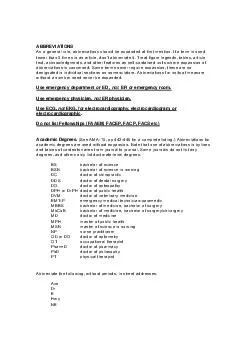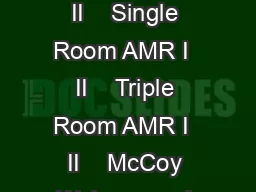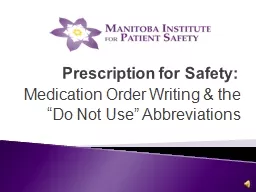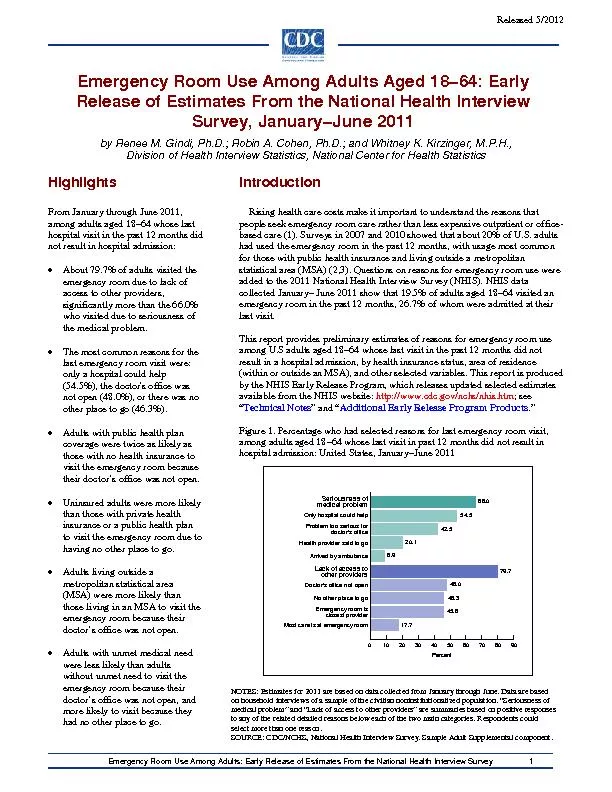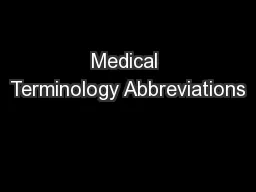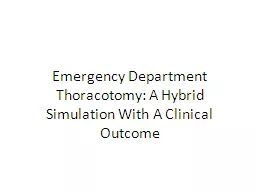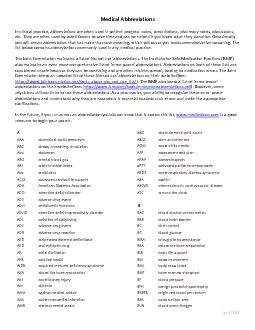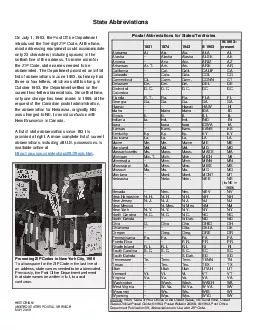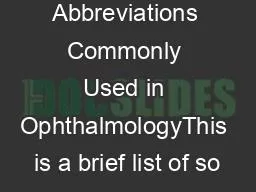PDF-ABBREVIATIONS Use emergency department or ED not ER or emergency room
Author : yoshiko-marsland | Published Date : 2015-01-24
Use emergency physician not ER physician Use ECG not EKG for electrocardiography electrocardiogram or electrocardiographic Do not list Fellowships FAAEM FACEP FACP
Presentation Embed Code
Download Presentation
Download Presentation The PPT/PDF document "ABBREVIATIONS Use emergency department o..." is the property of its rightful owner. Permission is granted to download and print the materials on this website for personal, non-commercial use only, and to display it on your personal computer provided you do not modify the materials and that you retain all copyright notices contained in the materials. By downloading content from our website, you accept the terms of this agreement.
ABBREVIATIONS Use emergency department or ED not ER or emergency room: Transcript
Download Rules Of Document
"ABBREVIATIONS Use emergency department or ED not ER or emergency room"The content belongs to its owner. You may download and print it for personal use, without modification, and keep all copyright notices. By downloading, you agree to these terms.
Related Documents

